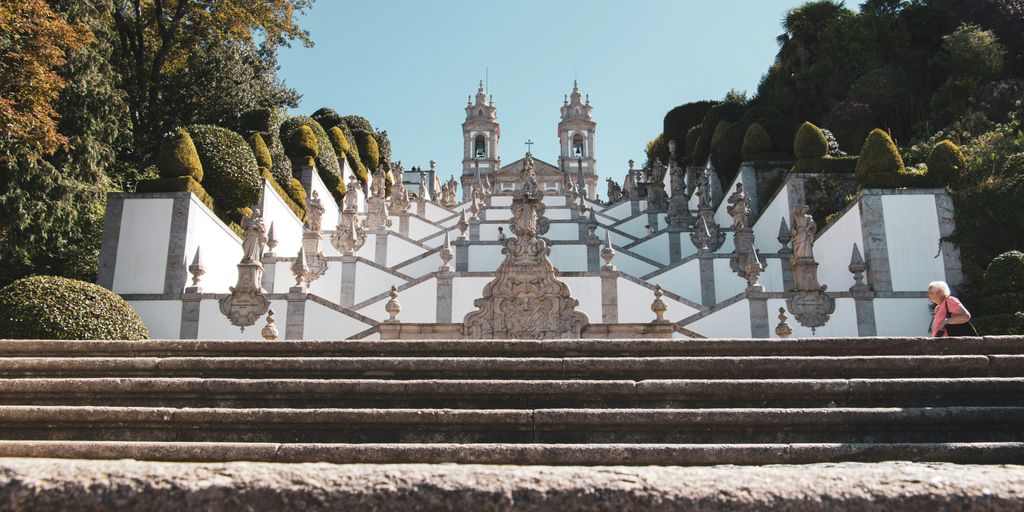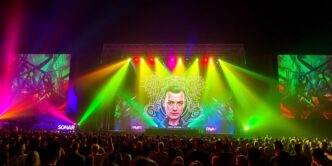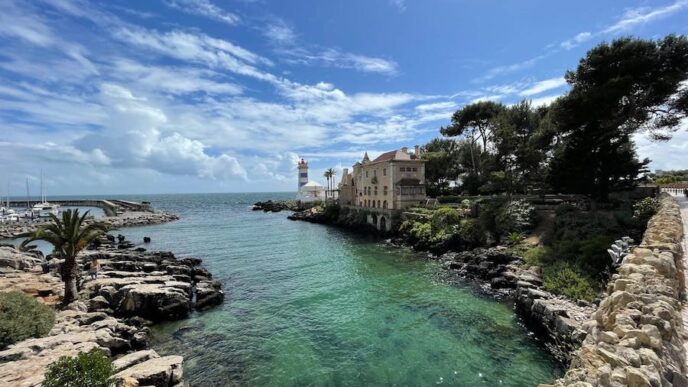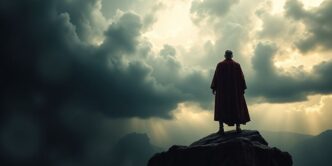Exploring the Royal Building of Mafra
The Royal Building of Mafra is a stunning example of Baroque architecture and a significant part of Portugal’s history. Built between 1717 and 1730 under King D. João V, this grand structure is not just a palace but a complex that includes a basilica, a convent, and beautiful gardens. Here’s why it’s worth a visit:
History and Construction
- Construction Period: The building was constructed over 13 years, showcasing the dedication and resources of the time.
- Royal Influence: It was commissioned by King D. João V, reflecting the power and wealth of the Portuguese monarchy.
- UNESCO Status: Recognized as a UNESCO World Heritage Site, it highlights Portugal’s rich historical heritage.
Architectural Highlights
- Baroque Style: The building is a prime example of Baroque architecture, with intricate designs and grand scale.
- Massive Size: It features over 1,200 rooms and 4,700 doors and windows, making it one of the largest palaces in Europe.
- Unique Features: The basilica is adorned with beautiful artwork and sculptures, showcasing the artistic talent of the era.
The Magnificent Library
- World-Class Library: The library houses around 40,000 books, making it one of the most important libraries in the world.
- Architectural Beauty: The library’s design is breathtaking, with wooden shelves and a stunning ceiling that captivates visitors.
- Cultural Significance: It serves as a reminder of the importance of literature and knowledge in Portuguese history.
Visiting the Royal Building of Mafra is like stepping back in time, where you can explore the grandeur of Portugal’s past and appreciate its architectural beauty. Whether you’re a history buff or just looking for a beautiful place to visit, Mafra is a must-see destination!
Discovering the Historic Center of Guimarães

Guimarães is often called the cradle of Portugal because of its vital role in the country’s history. This city is a blend of medieval charm and modern life, making it a fascinating place to explore. Here’s what you can discover:
The Cradle of Portugal
- Guimarães Castle: Built around the year 1000, this castle is a symbol of the city and a must-see for visitors.
- Ducal Palace: This grand palace, built in the 15th century, showcases the rich history of the region.
- São Miguel do Castelo Church: This church is where Afonso Henriques, the first king of Portugal, was symbolically named.
Main Attractions
- Historic streets: Wander through narrow streets filled with shops and cafes that reflect the city’s history.
- Parks and gardens: Enjoy the beautiful green spaces like Monte da Penha, perfect for a relaxing walk.
- Cultural events: Guimarães was named the European Capital of Culture in 2012, highlighting its vibrant arts scene.
Cultural Significance
- Unique traditions: Experience local crafts like waist-loom weaving and pottery, which connect you to the past.
- Delicious food: Don’t miss trying Toucinho do Céu, a traditional dessert that is a slice of heaven.
- UNESCO World Heritage Site: Guimarães was recognized for its historical importance, making it a significant destination for history lovers.
Wandering Through Évora’s Historic Center

Évora is often called a museum city because of its rich history and beautiful architecture. The Historic Centre is a UNESCO World Heritage Site, and it feels like stepping into a living museum. Here’s what you can explore:
Roman Temple and Cathedral
- Roman Temple: This ancient structure is a reminder of Évora’s Roman past. It’s one of the best-preserved Roman ruins in Portugal.
- Évora Cathedral: A stunning mix of styles, this cathedral is a must-see. Climb to the top for a breathtaking view of the city.
- Historical Significance: Both sites tell the story of Évora’s long and varied history, making them essential stops.
Architectural Styles
- Diverse Designs: The streets are lined with buildings from different eras, showcasing styles from Roman to Gothic.
- Narrow Streets: Walking through the narrow alleys gives you a sense of the city’s medieval charm.
- Medieval Walls: The ancient walls that surround the city are a great way to connect with its past.
Local Gastronomy
- Cozido à Portuguesa: This hearty stew is a local favorite and a great way to taste traditional Portuguese cuisine.
- Black Pork: Known for its rich flavor, this dish is a must-try when visiting Évora.
- Souvenirs: Don’t forget to pick up some local terracotta figurines as a reminder of your visit!
Évora’s Historic Centre is not just a place to see; it’s a place to experience. With its rich history, stunning architecture, and delicious food, it’s a destination that truly captures the heart of Portugal.
The Charm of Sintra’s Cultural Landscape
Sintra is often described as a fairy tale come to life. Nestled in the lush hills, it offers a unique blend of history, architecture, and nature that captivates every visitor. Here’s what makes Sintra a must-visit destination:
Pena Palace and Moorish Castle
- Pena Palace: This colorful palace stands out with its vibrant hues and stunning architecture. It’s a perfect example of Romanticism in architecture.
- Moorish Castle: This ancient fortress offers breathtaking views and a glimpse into the past. Walking along its walls feels like stepping back in time.
- UNESCO World Heritage Site: Sintra’s cultural landscape is recognized for its historical significance and natural beauty, making it a protected site.
Natural Beauty
- Lush Gardens: The gardens surrounding the palaces are filled with exotic plants and flowers, creating a serene atmosphere.
- Hiking Trails: Explore the many trails that wind through the hills, offering stunning views of the landscape.
- Biodiversity: The area is home to various species of plants and animals, making it a great spot for nature lovers.
Local Delicacies
- Queijadas de Sintra: These sweet cheese pastries are a local favorite and a must-try when visiting.
- Ginginha: A cherry liqueur that is popular in Sintra, it’s the perfect drink to enjoy after a day of exploring.
- Traditional Restaurants: Experience local cuisine in charming eateries that reflect the region’s rich culinary heritage.
Sintra is not just a place to visit; it’s an experience that combines history, culture, and nature in a way that few places can. Whether you’re wandering through the palaces or enjoying the local treats, Sintra is sure to leave a lasting impression.
Unveiling the Treasures of Porto
Porto, known as the City of Bridges, is a vibrant place filled with history and culture. Its historic center is a mesmerizing blend of medieval streets, vibrant culture, and architectural wonders, earning it UNESCO World Heritage status in 1996. Here are some highlights to explore:
Ribeira District
- Charming Streets: Stroll through the narrow, colorful streets of Ribeira, where you can find cute shops and local cafes.
- River Views: Enjoy stunning views of the Douro River, especially at sunset when the city lights reflect on the water.
- Cultural Events: Experience local festivals and events that showcase Porto’s rich traditions.
São Bento Station
- Stunning Tiles: Visit this train station famous for its beautiful azulejos (ceramic tiles) that depict historical scenes.
- Architectural Beauty: The building itself is a masterpiece, combining functionality with artistic design.
- Travel Hub: It’s not just a station; it’s a gateway to exploring more of Portugal.
Culinary Delights
- Francesinha: Try this famous sandwich, a local favorite that is hearty and delicious.
- Port Wine: Sample the world-renowned Port wine in one of the many cellars along the river.
- Local Markets: Visit the Mercado do Bolhão for fresh produce and traditional snacks, immersing yourself in the local food scene.
Porto is a city that invites you to explore its treasures, from its stunning architecture to its rich culinary offerings. Whether you’re wandering through the historic streets or enjoying a meal by the river, Porto promises an unforgettable experience.
Lisbon’s Iconic UNESCO Sites

Lisbon, the vibrant capital of Portugal, is home to some of the most remarkable UNESCO World Heritage Sites. These sites not only showcase the city’s rich history but also its stunning architecture. Here are the key highlights:
Jerónimos Monastery
- Historical Significance: Built in the late 15th century, this monastery is a prime example of Manueline architecture, reflecting Portugal’s Age of Discovery.
- Architectural Features: The intricate carvings and stunning cloisters are a must-see for any visitor.
- Cultural Importance: It houses the tomb of Vasco da Gama, a famous explorer, making it a significant site for history lovers.
Belém Tower
- Iconic Structure: This tower was built to defend the city and is a symbol of Portugal’s maritime heritage.
- Unique Design: Its unique architectural style combines Gothic and Moorish influences, making it visually striking.
- Visitor Experience: Climbing to the top offers breathtaking views of the Tagus River and the surrounding area.
Alfama District
- Historic Neighborhood: Alfama is one of the oldest districts in Lisbon, known for its narrow streets and traditional Fado music.
- Cultural Vibe: The area is filled with local shops, cafes, and stunning viewpoints, perfect for exploring.
- Local Cuisine: Don’t miss trying the famous pastéis de nata while wandering through this charming district.
These sites are just a glimpse of what Lisbon has to offer. Each location tells a story of Portugal’s past and is worth a visit for anyone exploring this beautiful country.
The University of Coimbra and Its Historical Importance

Architectural Marvels
The University of Coimbra is one of the oldest universities in Europe, founded in 1290. Its stunning architecture includes:
- The Joanina Library, known for its beautiful Baroque style and vast collection of ancient books.
- The Royal Palace, which showcases the university’s rich history.
- The impressive bell tower that stands tall, symbolizing the university’s academic spirit.
Academic Legacy
The university has a long-standing tradition of excellence in education. It has produced many notable alumni, including:
- Politicians who shaped Portugal’s history.
- Influential writers and poets who contributed to Portuguese literature.
- Scientists and innovators who have made significant advancements in various fields.
Cultural Events
Coimbra is often called the “City of Students” due to its vibrant student life. The university hosts various cultural events, such as:
- Fado nights, where students perform traditional Portuguese music.
- Academic ceremonies that celebrate the university’s heritage.
- Festivals that bring together students and locals, showcasing the city’s lively atmosphere.
Visiting the University of Coimbra is not just about seeing beautiful buildings; it’s about experiencing a place where innovation and entrepreneurship thrive, making it a must-see UNESCO World Heritage site.
Frequently Asked Questions
How many UNESCO sites are there in Portugal?
Portugal has 17 UNESCO World Heritage Sites, each showcasing unique history and culture.
What is the best time to visit Portugal?
The best time to visit is during spring or fall when the weather is pleasant and there are fewer tourists.
Are the UNESCO sites in Portugal easy to access?
Yes, many UNESCO sites are located in major cities, making them easy to visit.
What should I not miss when visiting Portugal?
Don’t miss trying local foods like pastéis de nata and exploring historical towns like Sintra and Évora.
Is Portugal a safe country for tourists?
Yes, Portugal is known to be one of the safest countries in Europe for travelers.
Can I find English speakers in Portugal?
Yes, English is widely spoken in major cities, making communication easy for tourists.













